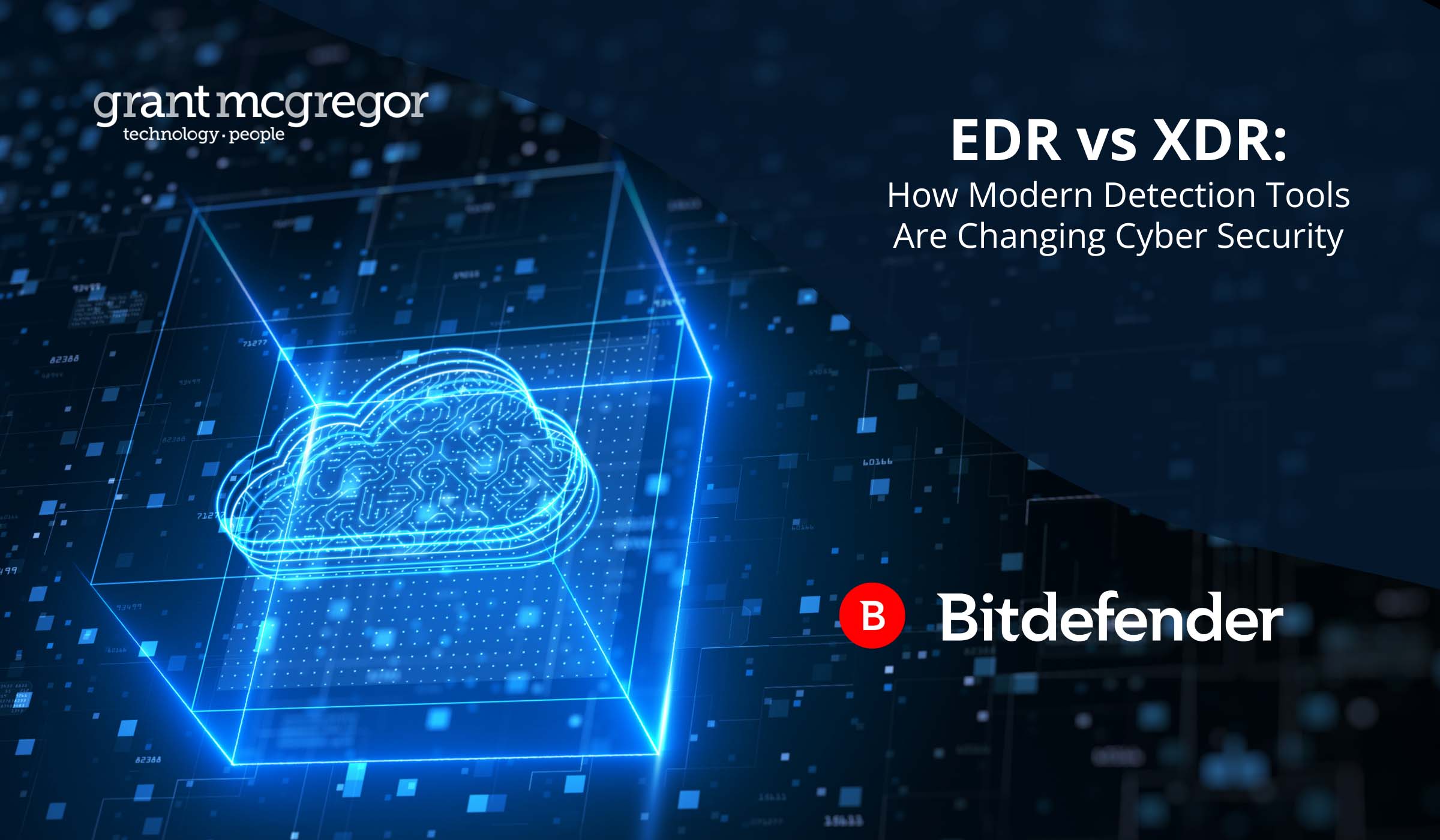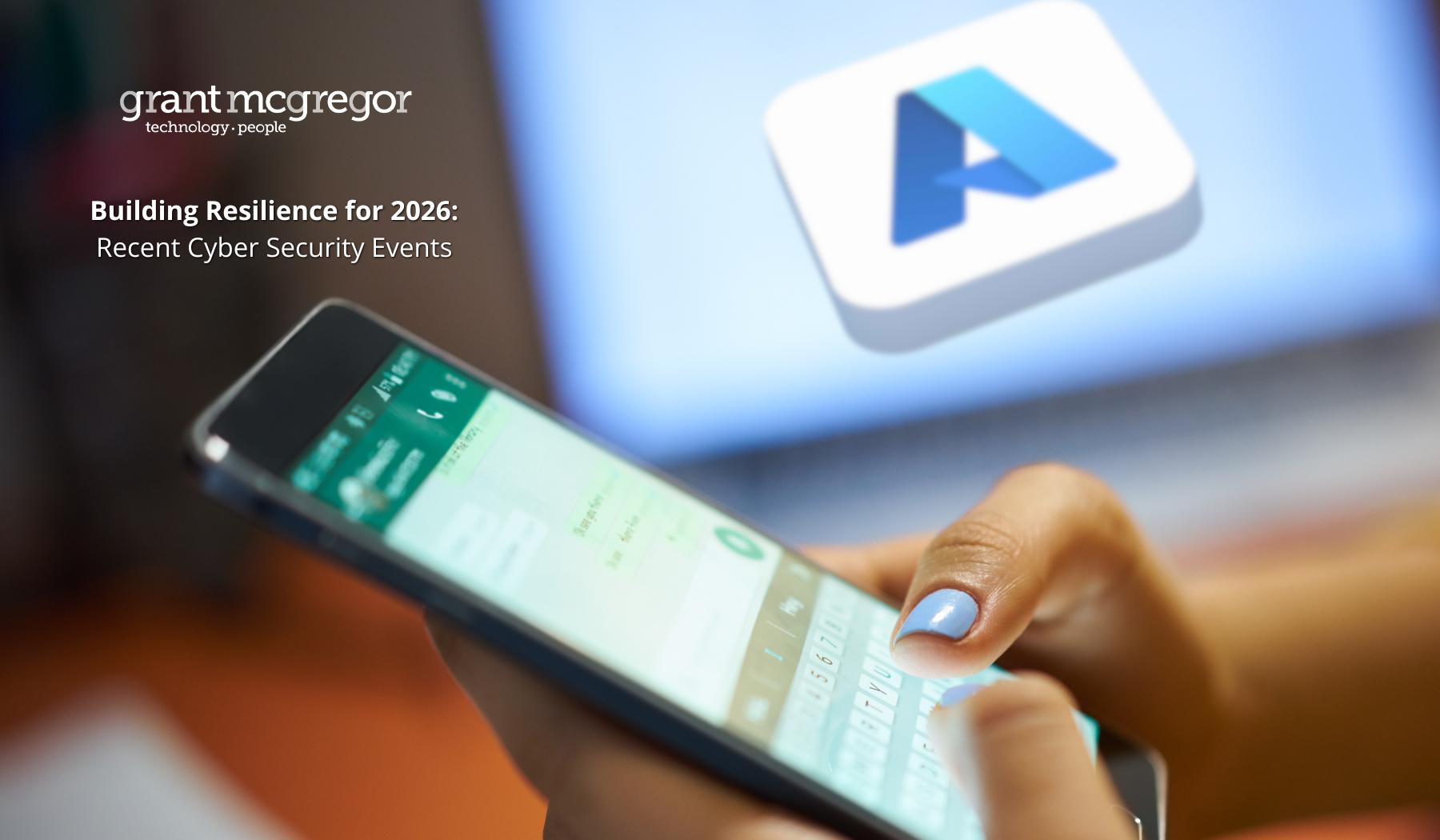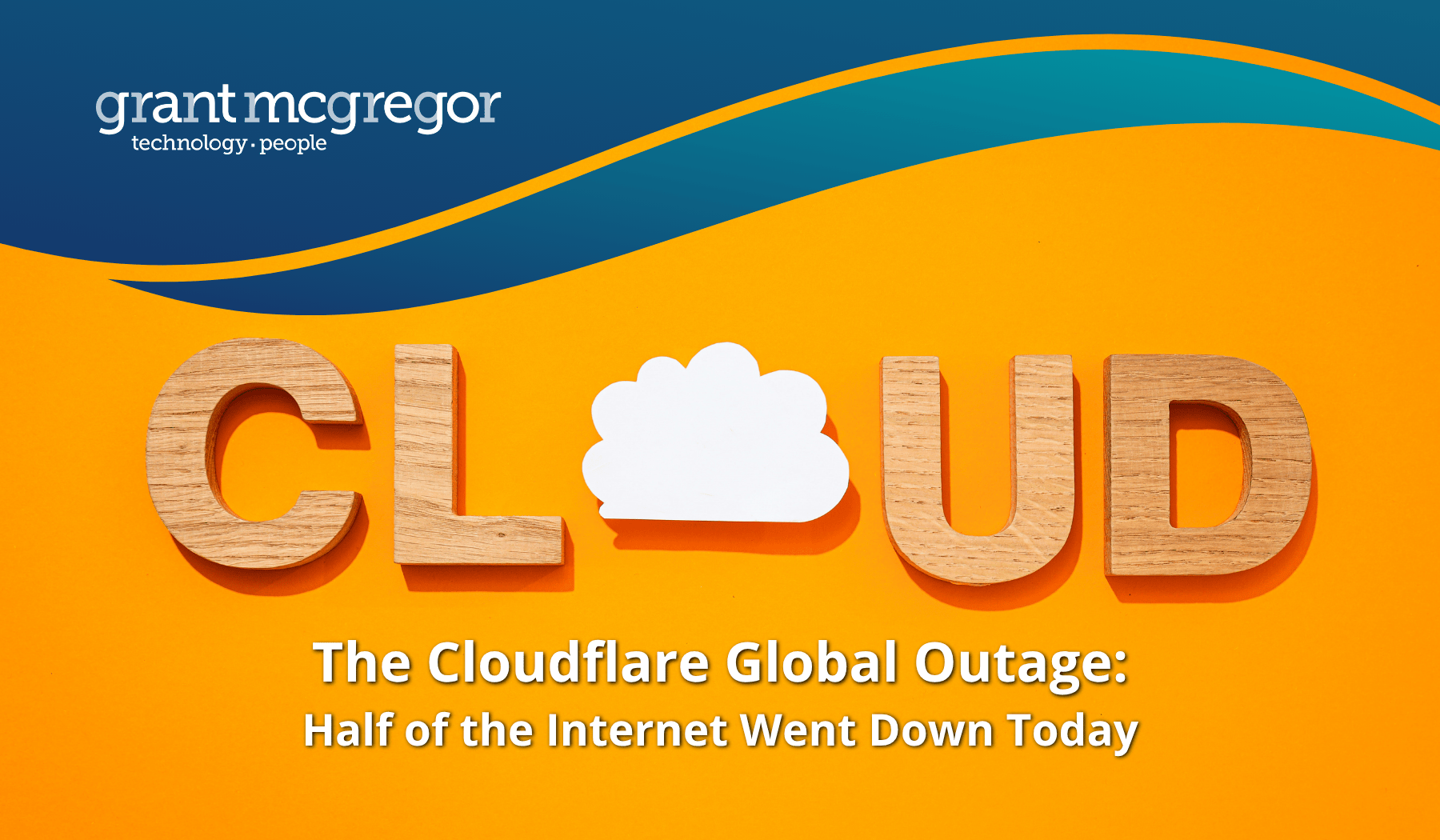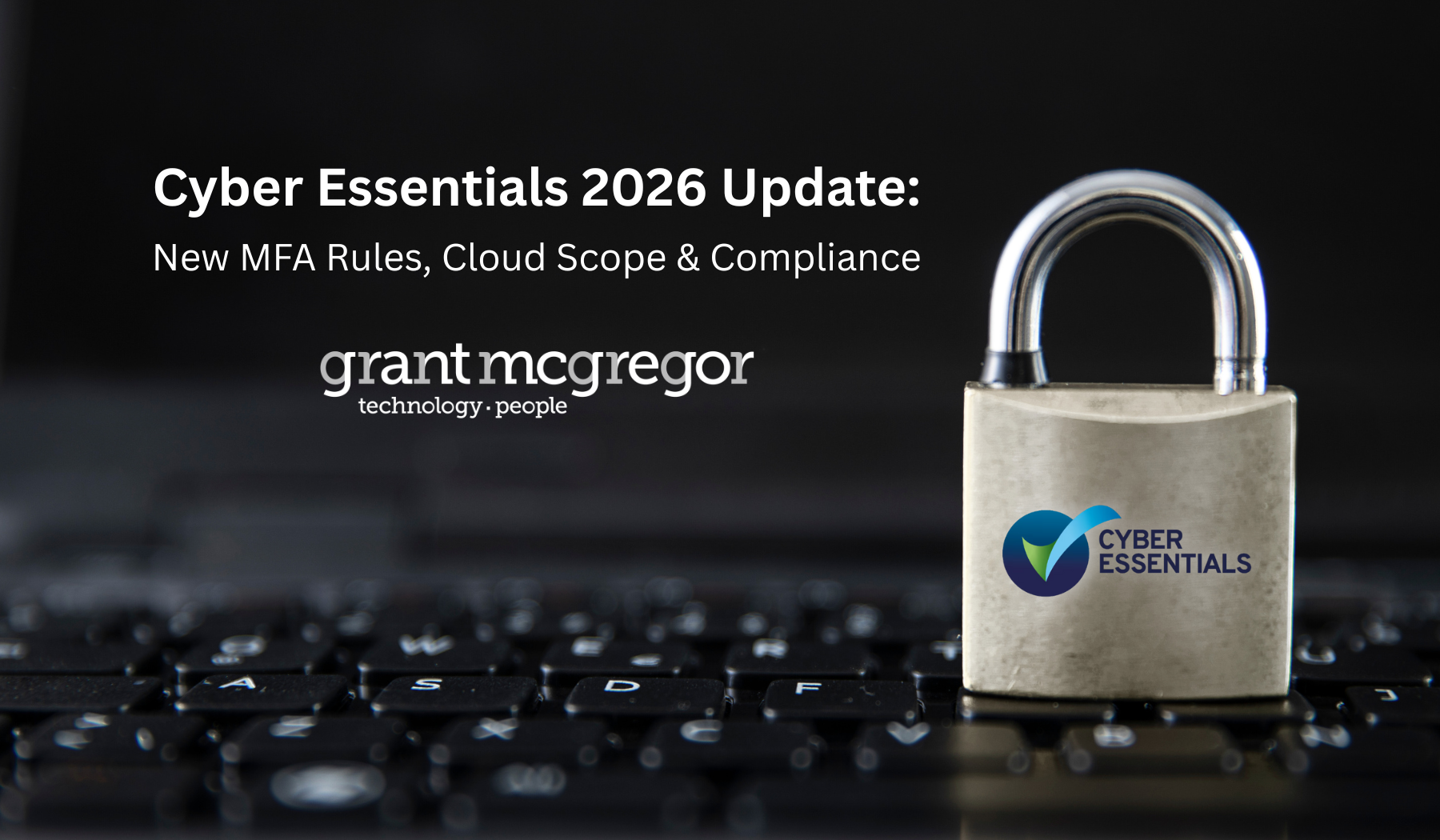EDR vs XDR: How Modern Detection Tools Are Changing Cyber Security

The security dashboard flags a suspicious sign-in, a new mailbox rule and an unexpected admin change in the cloud. None look critical on their own, but together they could signal the beginning of an attack.
For years, security teams have relied on Endpoint Detection & Response (EDR) to understand what’s happening on their devices and contain threats early. But incidents rarely stay confined to one machine. They move through user accounts, email systems, cloud apps and internal networks.
That’s why Extended Detection & Response (XDR) has emerged: it connects signals from across your entire environment so you can see the whole picture and respond with clarity and speed.
EDR is still the foundation
 Endpoint Detection and Response (EDR) is software installed on your laptops, servers and other endpoints. It monitors activity, identifies unusual behaviour and flags suspicious actions, enabling you to stop attacks early.
Endpoint Detection and Response (EDR) is software installed on your laptops, servers and other endpoints. It monitors activity, identifies unusual behaviour and flags suspicious actions, enabling you to stop attacks early.
Good EDR gives your team:
- High-quality detections with fewer false positives
- Detailed timelines of activity for investigation
- Threat hunting tools to search across endpoints
- Rapid response options, such as isolating an affected device, stopping a malicious program and undoing harmful changes
It’s the first essential layer of protection. Without EDR, it’s difficult to understand what is happening on your devices or to stop an attack before it spreads.
When organisations need more than EDR
EDR is powerful but focused on activity on your devices. Many modern attacks move beyond the endpoint into other parts of your environment, for example:
- Stealing or abusing user credentials
- Creating hidden mailbox rules or exploiting compromised mailboxes
- Exploiting cloud misconfigurations or weak access controls
- Spreading deeper into your network
While EDR shows you what’s happening on the device itself, it doesn’t always piece together what’s happening across accounts, email, cloud services and your network. That’s where XDR helps, building on EDR’s insights and bringing those signals together into one clearer picture.
What XDR does
 XDR builds on everything EDR offers, but goes further by collecting and analysing signals from across your whole environment, including email, user accounts, cloud apps and network traffic and bringing them together into a clear overview.
XDR builds on everything EDR offers, but goes further by collecting and analysing signals from across your whole environment, including email, user accounts, cloud apps and network traffic and bringing them together into a clear overview.
This broader visibility makes it easier to understand how an attack started, how far it has spread and how to stop it quickly. XDR also reduces false alarms by automatically connecting the dots and prioritising alerts that require action.
Understanding the role of MDR in modern security
Even with the best EDR or XDR tools in place, someone still needs to monitor alerts, investigate suspicious behaviour and act quickly when real threats emerge. To bridge this gap, many organisations choose Managed Detection & Response (MDR).
 If you’re wondering how these pieces fit together, here’s the simplest way to think about it:
If you’re wondering how these pieces fit together, here’s the simplest way to think about it:
- EDR is a CCTV camera inside the house.
- XDR is CCTV cameras inside and outside, plus motion sensors on windows and doors.
- MDR is a security company watching all those cameras day and night and calling the police if something happens.
MDR is a managed service that adds a 24/7 human layer on top of the technology. A team of cybersecurity experts continuously monitors your systems, investigates suspicious activity and responds before incidents can escalate. It is like having your own dedicated security operations centre without the associated costs and complexities of building one yourself.
If you choose to run only EDR or XDR, your team will need to manage alerts, investigate incidents and take action.
With MDR, that responsibility is taken off your shoulders and the experts handle everything for you.
How MDR connects with Bitdefender GravityZone
 At Grant McGregor, we deliver this managed service in partnership with Bitdefender, using the GravityZone platform as its foundation. GravityZone provides the powerful EDR and optional XDR technology to detect, analyse and correlate threats across your environment.
At Grant McGregor, we deliver this managed service in partnership with Bitdefender, using the GravityZone platform as its foundation. GravityZone provides the powerful EDR and optional XDR technology to detect, analyse and correlate threats across your environment.
The MDR team then builds on this technology by continuously monitoring what GravityZone detects, investigating any suspicious activity and taking rapid action to contain threats before they can cause harm.
It’s a combination of advanced tools and expert people: GravityZone provides the visibility and intelligence, while MDR ensures nothing is missed and every incident is handled quickly and effectively.
For organisations that want even deeper visibility, XDR sensors can be added to GravityZone as part of the MDR service. These sensors provide analysts with additional context not just from endpoints, but also from email, cloud services, user identities and network traffic, helping them to stop attacks even sooner.
A layered approach to modern security
 EDR is the essential first line of defence. It monitors your endpoints and stops threats in their tracks.
EDR is the essential first line of defence. It monitors your endpoints and stops threats in their tracks.
XDR builds on this by connecting data from across your IT environment, giving you a clearer view of how attacks unfold and how to stop them.
MDR adds continuous human monitoring and rapid response on top of these technologies. It always includes EDR and can also include XDR, ensuring your security is watched around the clock.
Together, these layers create a modern, scalable defence system that helps you stay ahead of today's threats without adding pressure to your team or complicating your operations.
Talk to us about how MDR and XDR can strengthen your security posture.
Call us: 0808 164 4142
Message us: https://www.grantmcgregor.co.uk/contact-us





